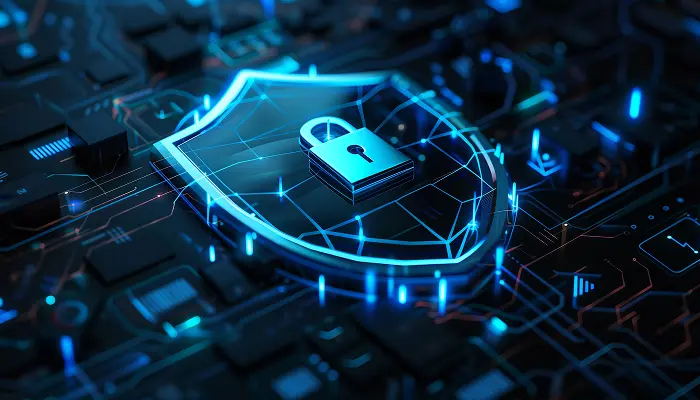Flint International
Compliance & Cybersecurity Services
Build Security. Ensure Continuity. Deliver Excellence.
Flint empowers organizations with ISO 27001 (Information Security), ISO 22301 (Business Continuity), and ISO 20000-1 (IT Service Management) services. From gap assessment to implementation, we help you stay secure, resilient, and trusted.
Why Assessment Comes First
Every successful certification journey starts with a clear view of where you stand today.
Our structured gap assessment answers:
- Which controls are missing?
- How far is your current posture from ISO requirements?
- What corrective actions are needed to get audit-ready?
At Flint, we don’t just point out the gaps — we help you close them with a clear implementation roadmap.
Why Choose Flint International
Your Career as a Catalyst for Global Transformation

ISO 27001 – Information Security Management
Protect your organization’s most valuable asset: data.
- Identify vulnerabilities through a detailed gap assessment
- Benchmark your ISMS against Annex A controls
- Build a corrective roadmap for risk management and audit success
- Support implementation of security policies, procedures, and controls

ISO 22301 – Business Continuity Management
Be prepared for the unexpected with a resilient business continuity framework.
- Assess gaps in disaster recovery and continuity planning
- Benchmark resilience against global BCM standards
- Develop tailored recovery strategies and assign clear roles
- Support implementation of continuity frameworks and mock drills

ISO 20000-1 – IT Service Management
Deliver IT services that are secure, efficient, and reliable.
- Evaluate ITSM processes with a structured gap analysis
- Identify inefficiencies in service design, transition, and delivery
- Build a roadmap aligned with ITIL and ISO 20000-1 standards
- Support implementation of governance and monitoring systems
How We Work
Gap Assessment
Evaluate organizational readiness through a structured review of:
- Processes: Identify workflow gaps, redundancies, and inefficiencies that impact compliance and performance.
- Technology: Assess IT systems, tools, and infrastructure for alignment with business and security objectives.
- People & Competencies: Examine role clarity, skill levels, and operational maturity to uncover capability deficiencies.
- Benchmarking: Compare current practices against ISO standards and industry best practices to determine improvement areas.
- Maturity Scorecard: Deliver a clear, actionable scorecard highlighting strengths, gaps, and priority interventions.
Implementation Roadmap
A well-defined implementation roadmap ensures that strategic initiatives move from intent to action in a structured, transparent, and outcome-driven manner. It aligns scope, stakeholders, timelines, and methodologies—turning assessment findings into tangible improvements.
What — Define the Scope and Priorities
Clearly articulate what will be implemented based on identified gaps, risks, and opportunities.
Initiatives & Workstreams
Identify and prioritize key projects that address critical gaps.
- Implement ISO 27001 controls for access management
- Deploy Endpoint Detection & Response (EDR) solutions
- Redesign the incident response workflow
- Conduct company-wide security awareness training
Deliverables & Outputs
Define tangible artifacts to be produced.
Examples
- New or revised policies, procedures, system configurations, dashboards, training modules.
Resources & Capabilities
Outline tools, personnel, external consultants, budget, and infrastructure required.
Scope Boundaries
Specify what is in-scope and out-of-scope, including phased implementation.
Examples
- Phase 1 focuses on head office and critical systems; legacy systems deferred to Phase 2.
Why — Establish the Rationale and Urgency
Articulate why each initiative matters to build leadership commitment and stakeholder alignment.
Link to Risks & Gaps
Example
- Current endpoint security is inadequate, exposing us to malware risks identified in the gap assessment.
Strategic & Compliance Drivers
Tie initiatives to regulatory deadlines, business strategy, or recent incidents.
Examples
- Upcoming certification renewal, heightened threat landscape, or compliance mandates.
Business Value:
Emphasize ROI and impact.
Examples
- Reduced breach risk, improved market credibility, enhanced customer trust, enabling secure scale-up.
Who — Clarify Roles and Accountability
Define ownership, responsibilities, and stakeholder involvement for smooth execution.
Sponsors & Owners
CISO, CIO, IT Director, Compliance Manager
Execution Teams
Internal IT/security teams, external consultants, process owners
Stakeholders
Business units, Legal, HR, Vendors, Auditors
RACI Mapping
- Accountable: Project sponsor
- Responsible: Security/implementation team
- Consulted: Audit, Legal
- Informed: Business units, senior management
When — Set Timelines and Milestones
Provide a clear schedule for implementation to ensure alignment and momentum.
Phasing & Sequencing
Example
- Q1: Tool selection & procurement
- Q2: Deployment & configuration
- Q3: Integration & testing
- Q4: Full operationalization
Review Points & Dependencies
Identify critical decision gates (e.g., post-pilot reviews) and dependencies (e.g., training after process redesign).
Performance Measurement
Establish baseline, interim, and final metrics to assess progress and maturity.
Where — Define Scope of Application
Clarify where initiatives will be implemented across organizational and technical domains.
Organizational Coverage
Head office, regional offices, critical systems first—followed by broader rollout.
Technical Landscape
Perimeter defenses, internal systems, cloud environments, mobile endpoints.
Resource & Control Locations
Onsite vs. remote teams, centralized SOC vs. regional nodes for dashboards and monitoring.
How — Define the Execution Methodology
Lay out the approach, governance, and quality assurance mechanisms to deliver successfully.
Execution Model
Phased rollouts, agile sprints, pilots followed by scale-up.
Risk Management
Maintain a risk register with mitigation plans, fallback options, and contingencies.
Quality & Compliance
Leverage periodic audits, acceptance criteria, and third-party validation to ensure standards adherence.
Tracking & Reporting
Use KPIs and metrics such as control coverage, incident detection rate, audit readiness score, and maturity index.
Change Management
Embed structured training, communication, and stakeholder engagement to drive adoption.
Continuous Improvement
Institutionalize feedback loops and the PDCA (Plan–Do–Check–Act) cycle for iterative maturity enhancement.
Implementation Support
- Assist with policy creation, documentation, and control deployment
- Train teams for ongoing compliance
- Conduct internal audits and readiness reviews
- Guide you through to certification success
How We Work
Gap Assessment
- Review policies, processes, and controls
- Identify non-conformities and vulnerabilities
- Benchmark against ISO standards and industry peers
- Deliver a clear maturity scorecard
Implementation Roadmap
- Prioritize fixes by business impact and compliance requirements
- Develop corrective action plans
- Map controls directly to ISO requirements
Implementation Support
- Assist with policy creation, documentation, and control deployment
- Train teams for ongoing compliance
- Conduct internal audits and readiness reviews
- Guide you through to certification success
Why Choose Flint?
Assessment-Led Approach
Start with clarity, not assumptions
End-to-End Implementation
From identifying gaps to certification readiness
Cross-Framework Expertise
ISO 27001, 22301, and 20000-1 under one roof
Industry Tailored
BFSI, Healthcare, SaaS, Manufacturing, and more
Actionable Insights
Practical roadmaps and scorecards that leadership can use
FAQ’s
What is a Gap Assessment in ISO certification?
A gap assessment identifies missing policies, processes, or controls in your current setup compared to ISO 27001, ISO 22301, or ISO 20000-1 requirements, helping you prepare for successful certification.
Why is ISO 27001 important for businesses in KSA and UAE?
ISO 27001 ensures robust information security, protects sensitive data, and builds client trust. In KSA and UAE, it also supports compliance with regulatory frameworks and boosts eligibility for enterprise contracts.
How does ISO 22301 help organizations in the MENA region?
ISO 22301 strengthens business continuity and disaster recovery planning, ensuring operations continue during disruptions. This is critical for sectors like BFSI, healthcare, and oil & gas across the MENA region.
What are the benefits of ISO 20000-1 certification in IT services?
ISO 20000-1 improves IT service delivery, efficiency, and governance. It enhances client confidence, aligns with ITIL standards, and is essential for IT and SaaS companies in Saudi Arabia, UAE, and GCC.
How long does it take to achieve ISO certification in the Middle East?
Timelines vary by organization size and readiness. With Flint’s gap assessment and roadmap, companies in KSA and UAE typically achieve ISO 27001, 22301, or 20000-1 certification within 4–9 months.
What industries in KSA and UAE need ISO 27001 certification most?
BFSI, healthcare, government, and SaaS companies require ISO 27001 certification to protect data, meet compliance requirements, and secure enterprise or government contracts across KSA, UAE, and MENA.
Why choose Flint for ISO gap assessment and implementation?
Flint specializes in gap assessment, benchmarking, and implementation support for ISO 27001, 22301, and 20000-1. We offer tailored solutions for KSA, UAE, and MENA businesses, ensuring faster audit readiness and certification success.
Do you offer a free ISO gap assessment?
Yes ✅. Flint provides a Free Gap Assessment to help organizations in Saudi Arabia, UAE, and the MENA region understand compliance gaps and build a clear roadmap to ISO certification.
Your Compliance Journey Starts with a Gap Assessment.
Flint ensures your organization doesn’t just identify gaps — we help you close them and achieve certification across ISO 27001, ISO 22301, and ISO 20000-1.
